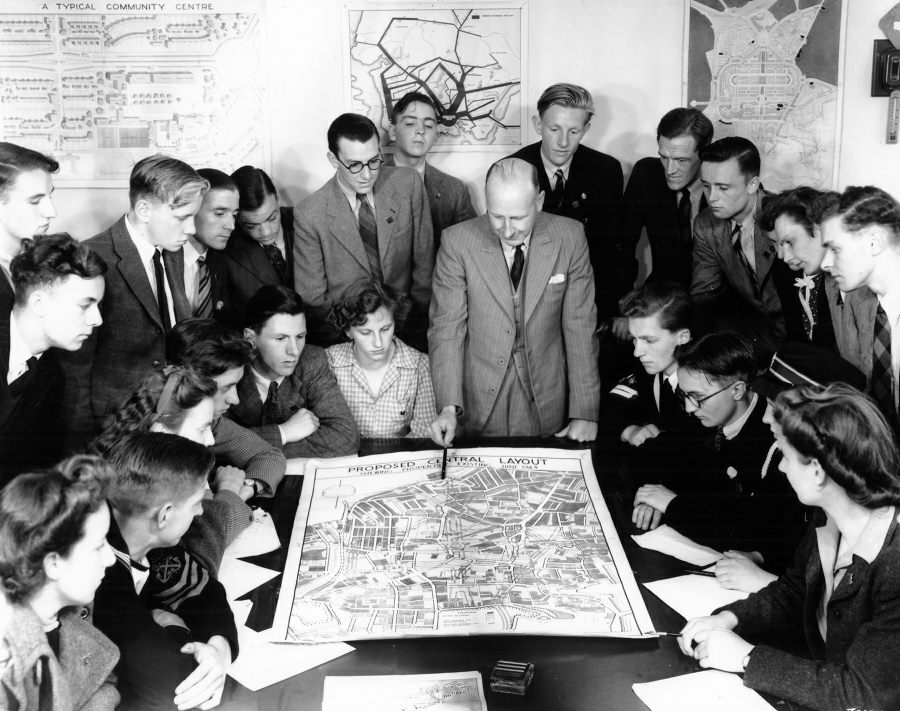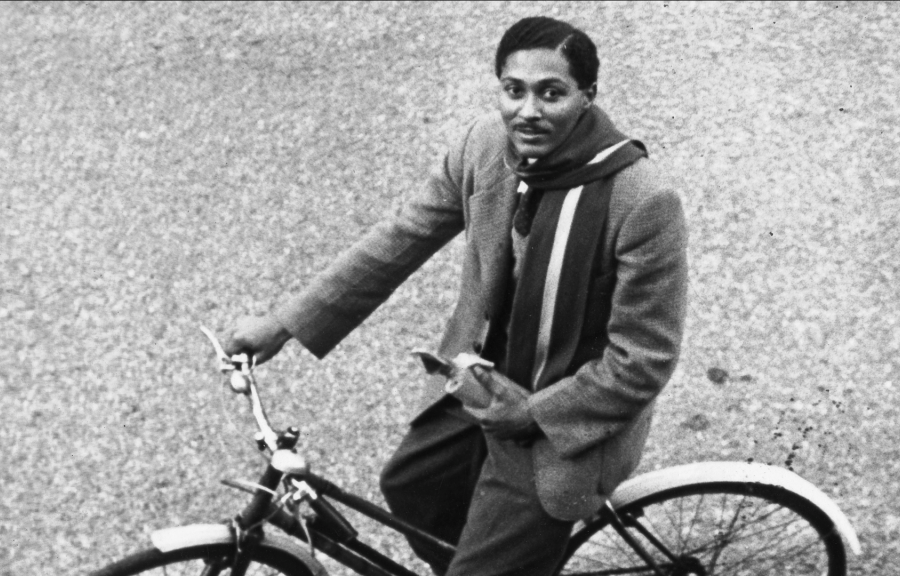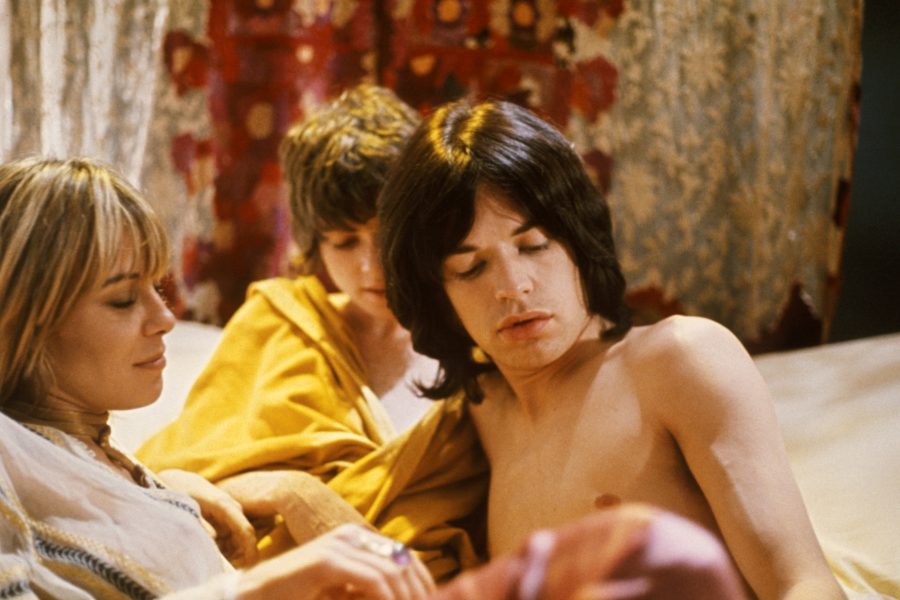Director, scriptwriter and feminist Jill Craigie was one of Britain’s earliest women documentary filmmakers. Her 1946 film The Way We Live documents post-war Plymouth and the responses of local people to the pioneering designs drawn up by town planner Sir Patrick Abercombie for the rebuilding the bombed-out city.
Craigie cleverly deploys a local cast in a film that combines classic documentary forms with the narratives of everyday family life, drawing out the complexities and importance of urban design.
The film was selected by BBC Radio 3 presenter Petroc Trelawny. Petroc grew up on the Lizard peninsula and attended Helston School. His personal memoir of Cornwall, Enough: Scenes from Childhood, was published in 2022.
PETROC TRELAWNY: INTRODUCTION
The film I have chosen is not a great drama, nor is it an entertaining farce. I wouldn’t even claim that it’s a masterpiece – but it is a fascinating, engrossing piece of cinema, telling the story of the rebuilding of Plymouth after the Blitz.
I am currently writing a book about Cornwall – and have decided to include Plymouth as part of it. I grew up in St Martin and went to school in Helston, and I think that for many of us growing up here Plymouth was Cornwall’s big city.
I remember school trips to the Theatre Royal to see Shakespeare, family trips on a Zoar Coaches bus to the pantomime – with great dames including Terry Scott, Danny La Rue and Les Dawson. Then there was Dingles. We had our own branch in Helston, but it was just a taster for the mighty palace of retail that stood on Royal Parade – with its elegantly dressed staff, sophisticated cafés, halls full of clothes and housewares and food delicacies – an insight into what seemed to a naive teenager a richer and more glamorous world.
Since those trips I have always loved Plymouth. I think its broad avenues and carefully zoned streets are a masterpiece of post-war design – though I know there are many dissenters to that view. But the fact is that Plymouth was so devastated by World War 2 that it had to rebuilt from scratch.
When we planned this evening we had no idea that war would have started again. No idea that we would be sitting here in safety and in comfort, a good meal in our stomachs, a nice bed to retire to later, while elsewhere on our continent people would be sheltering, terrified, in subway stations, mothers and sisters worrying about their soldier sons and brothers as missiles destroyed a great city …. The fear felt now in Kiev – and other Ukranian cities – must be similar to the fear that Plymothians must have felt in the early 1940s.
The French journalist André Savignon was in Plymouth during the Blitz and described ‘the almost physical impression that a city is slipping away from under ones very feet’. He reported that few were on the streets, most either hiding away or trapped under the wreckage. ‘Ashes, mud, dust’, he continued, ‘this poignant acrid smell, this effluvia of death’. By the end of the German campaign there had been a total of 59 raids; 1,172 civilians had died, 3,754 houses had been destroyed and more than 18,000 damaged. Eight cinemas, twenty-six schools, forty-one churches and a hundred pubs had been lost. The overall population had shrunk from 208,000 to 127,000. Plymouth was the most devastated city in England and had to be made afresh.
Lord Astor, the New York-born English newspaper proprietor Waldorf Astor, was the city’s wartime Lord Mayor. He wasted no time. Lord Reith, Churchill’s Minister of Works, had engaged the respected town planner Patrick Abercrombie to address London’s post-Blitz recovery. Astor demanded Abercrombie’s services too, instructing City Engineer James Paton Watson to collaborate with him. The two men started work at the height of the bombing campaign in autumn 1941; The Plan for Plymouth was finished in September 1943, seven months before the last bombing raid on 30 April 1944.
The devastation was so great that the old street plan could be forgotten and replaced with a completely new layout, the influences for which included Walter Burley Griffin’s Canberra, Ebenezer Howard’s Welwyn Garden City and Edwin Lutyens’s Delhi. The new centre was to be built around a pair of grand boulevards. Armada Way would run north-south, a direct line between the railway station and the Naval Memorial in the Hoe, one of the city’s main green spaces, Plymouth Sound its backdrop. Running east-west would be Royal Parade, with shops to the north and a civic and entertainment district to the south. Faith was to be zoned too; in time new places of worship for Unitarians, Baptists and Catholics would be built around Notte Street. The brick Roman Catholic Church of Christ the King, with its soaring campanile, was the last building designed by Sir Giles Gilbert Scott, built posthumously after his death in 1960.
We will see this rebuilding – and the optimism it engenders – in The Way We Live.
This is a fine example of Socialist cinema from the pioneering documentary maker Jill Craigie, who made her film in 1946 – so the sense of bombed Plymouth is still very real.
There is only one professional actor – Peter Willes – a writer who comes to Plymouth to meet Abercrombie and Paton Watson (they play themselves) and challenge what they are doing. A cast of local amateurs perform as the Copperwheat family, whose house has been destroyed.
The footage of the city in the immediate aftermath of war is sad and sometimes shocking – a service takes place in the ruined shell of St Andrew’s Church, hoardings protect bombsites, Nissen huts provide temporary accommodation, traders signs mark out where their shops had stood before the German onslaught.
For Craigie it was very much about the future – she persuaded thousands of young people to stage a march through the city. They carry banners demanding better housing, safer roads, social clubs, theatres and holiday hostels.
Michael Foot, the young Labour politician, makes an appearance, filmed campaigning in Devonport, the parliamentary seat he won in 1945. Central government, he argues, should help to fund a plan that could make Plymouth the most beautiful city in the world. Rather wonderfully Craigie and Foot fell in love while making the film, subsequently marrying and remaining together until her death more than half a century later.
Delivered on Friday 25 February, 2022.
© Petroc Trelawny


